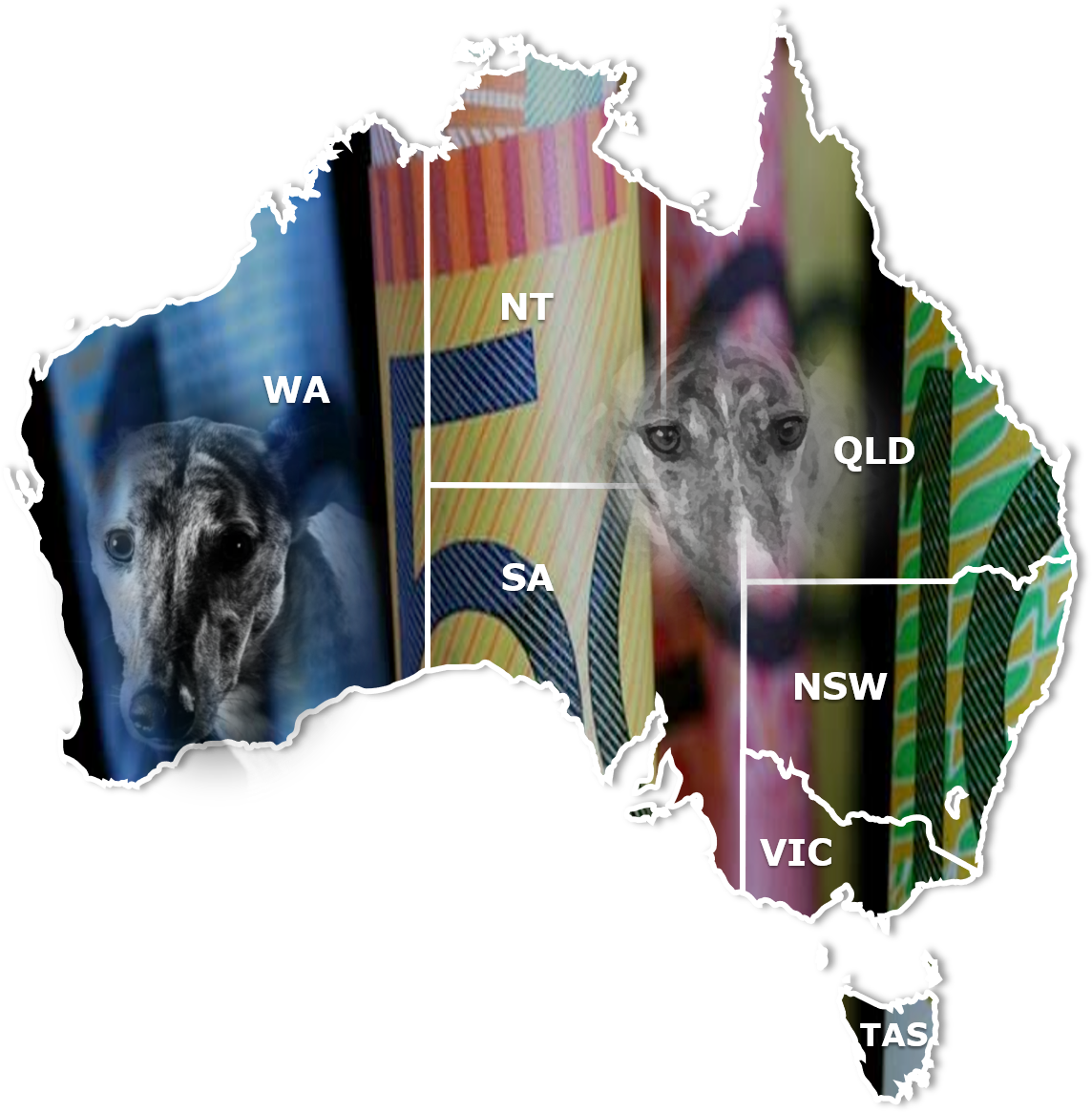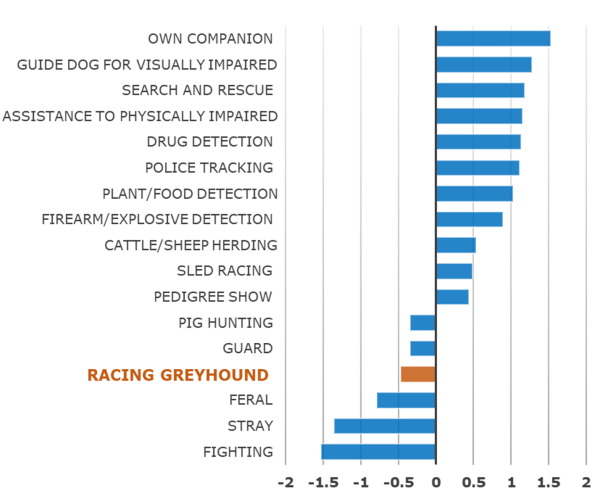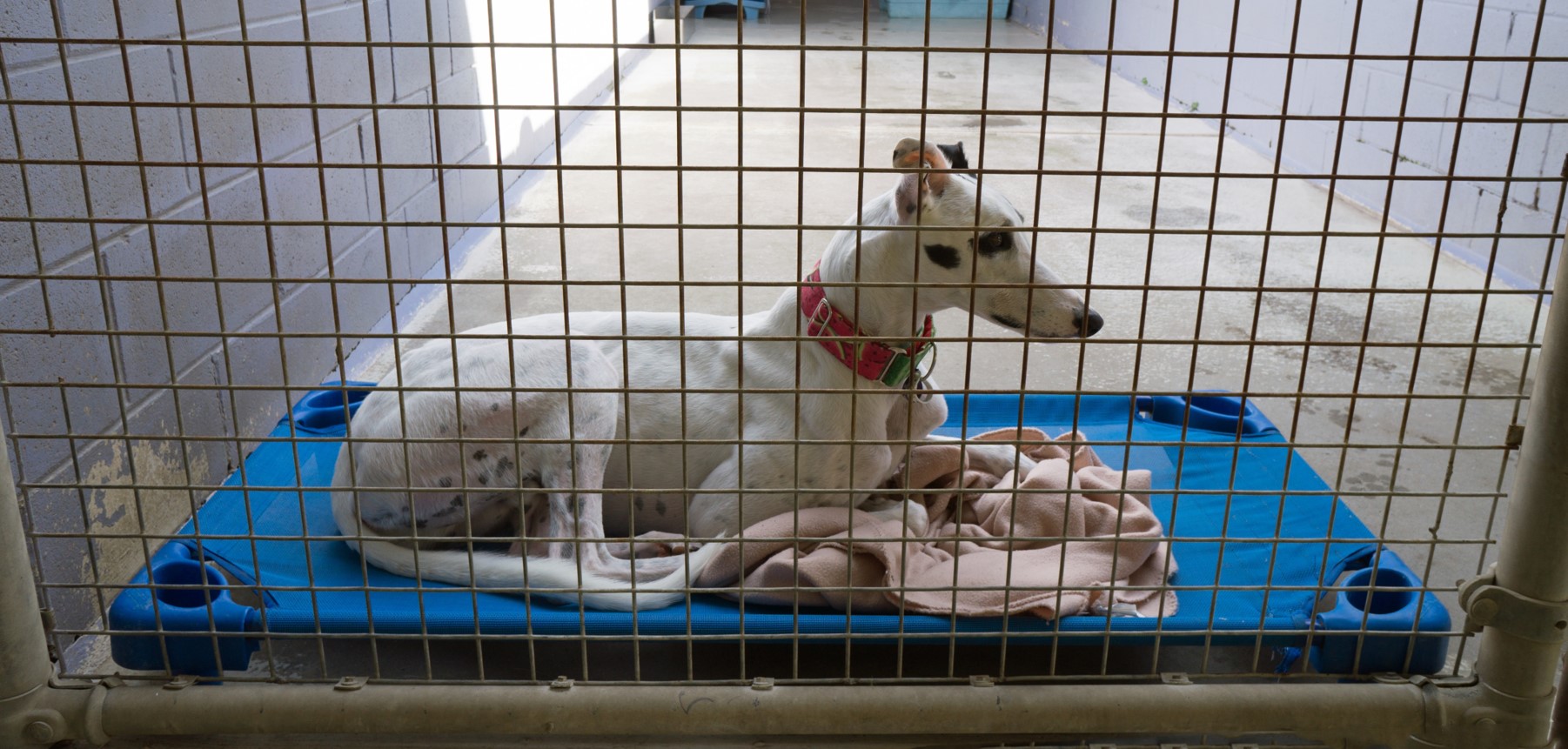by Warren Young
Adjunct Associate Professor, Institute of Health and Wellbeing, Federation University Australia
Racing greyhounds are considered as “working dogs”, that is a category of dogs that assists humans in some way.
A dubious service
A well-known example of a working dog is an assistance dog, such as a Labrador or Golden Retriever that helps guide people with visual impairment. Assistance dogs are highly valued for the important support they provide to people with disabilities.
In contrast, the work that greyhounds do is to provide entertainment for humans in the form of gambling. Unlike horse racing, greyhound racing does not attract big crowds at major race events. Its value to humans is essentially to allow humans to bet on races.
It is well known that greyhounds are bred in huge numbers in the hope of producing the next champion to generate prize money for owners, trainers, and other industry participants.
State governments also take a cut of the gambling winnings via betting tax. Most of this is now returned to the racing industry along with millions in other taxpayer-funded grants.
That is the dubious service that racing greyhounds provide to humans!

State governments pour millions of taxpayer dollars into keeping the brutal greyhound racing industry afloat
Read more here
But what about the greyhounds themselves
Given their existence is solely to serve the gambling desires of humans, what are their lives like?
Greyhounds are at risk of injury every time they take to the track, with major injuries often leading to death. Of the many dogs that never even make it to the track, they have no perceived value to their owners and are simply by-products of the gambling industry. There is widespread industry neglect and thousands of greyhounds are discarded by the racing industry every year.
Racing greyhounds are no more than commodities used to fuel the insatiable gambling appetite of Australians.
So what does the public think about the lives of racing greyhounds?
A 2020 study asked people to rate the welfare or quality of life of dogs in 17 different categories or functions that dogs have in society. The choices ranged from -2.0 (extremely low quality of life) to +2.0 (extremely high quality of life), with zero being neutral (see results below).

A poor quality of life
Not surprisingly, the companion dog was given the highest rating of quality of life, because pet dogs are often viewed as a loved member of the family. A guide dog for the visually impaired was also seen as having a very good quality of life, most likely because they are appreciated for the perceived value they have to supporting humans in need.
At the other end of the scale, the racing greyhound had a large negative score, indicating a perception of a poor quality of life not very different from a feral dog. This shows that the public perceives greyhound welfare to be sadly lacking, likely due to the understanding that greyhounds are only used by the racing industry as commodities for the purposes of gambling.
